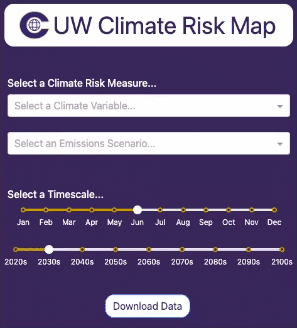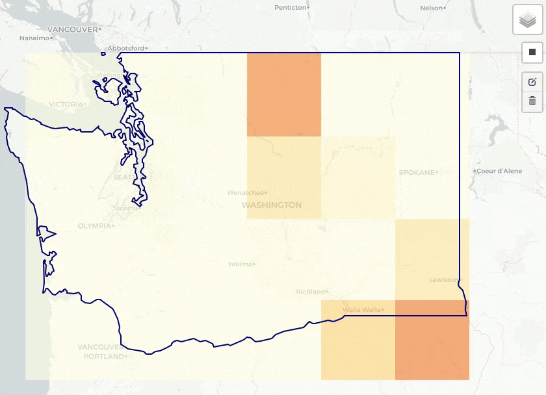CRL Map: Difference between revisions
Jump to navigation
Jump to search
mNo edit summary |
No edit summary |
||
| Line 10: | Line 10: | ||
<div style="margin-top: 20px;">__TOC__</div> | <div style="margin-top: 20px;">__TOC__</div> | ||
| style="width: | | style="width: 40%; vertical-align: top;" | | ||
[[File:CRL Map General at 12.04.14 PM.png|700px|frameless|center|alt=Climate Risk Map]] | [[File:CRL Map General at 12.04.14 PM.png|700px|frameless|center|alt=Climate Risk Map]] | ||
|} | |} | ||
= Quick-Start Guide = | |||
Follow this step-by-step guide for a basic overview of the map functionality. The map can be accessed '''here'''. | Follow this step-by-step guide for a basic overview of the map functionality. The map can be accessed '''here'''. | ||
Revision as of 20:34, 8 October 2024
Quick-Start Guide
Follow this step-by-step guide for a basic overview of the map functionality. The map can be accessed here.
Selecting Climate Scenario Parameters
First, we need to select a combination of parameters for the desired climate scenario.
The example on the right illustrates a scenario where the selected measure is "% Area Covered by Burnt Vegetation"—used as a proxy for wildfire risk—under a moderate emissions projection for August in the 2060s.
|
Selecting Infrastructure Overlays
Second, we need to select the specific types of infrastructure we are interested in visualizing.
|
Download Data
From here, you can explore the map and your particular areas of interest visually to get a sense of asset exposure. You may wish to download the data to do an offline analysis, which can be done easily.
|



